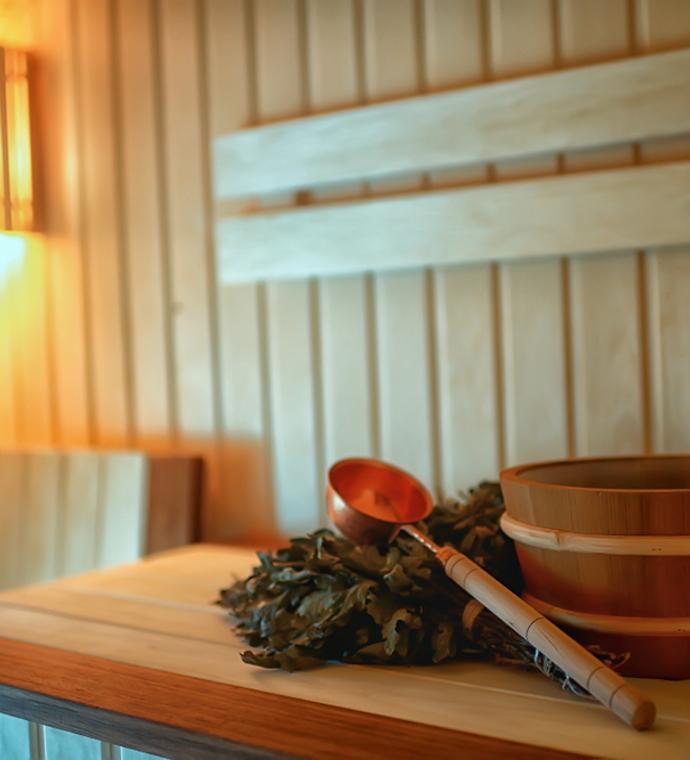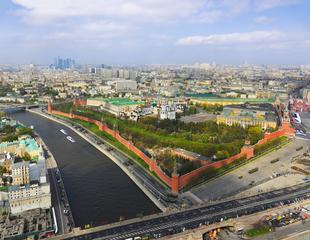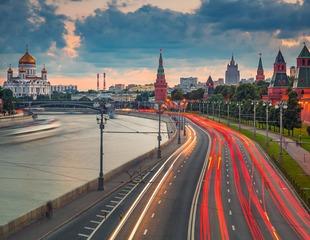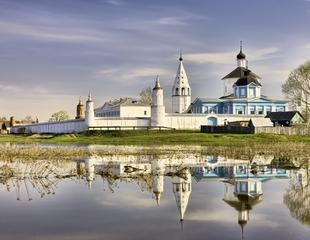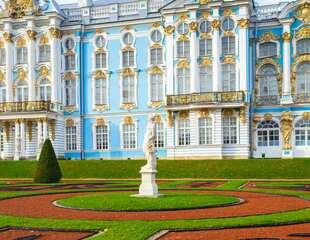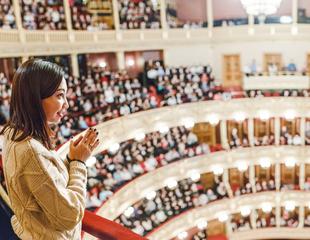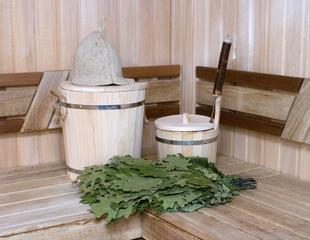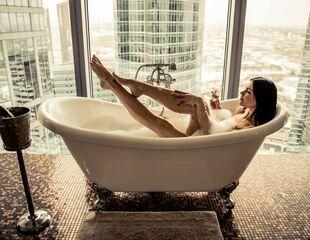The Sanduny bath existed as long ago as in the XVIIIth century and it was called in honor of Sila Nikolaevich Sandunov, the actor at the court of Catherine the Great in the 1790ies.
Sandunov was married to singer Elisabeth Uranova educated in the theater college. According to the legend the empress was fascinated by her talent and she took part in the destiny of the married couple. On the wedding day, she presented to Elisabeth expensive adornments. Sandunov has sold the presented brilliants and bought at a low price aground on the bank of river Neglinnaja. Further, he bought more grounds for his neighbors.
By 1806 he has destroyed all buildings situated on his ground and built a stone bath. The bath built by him outlasted the fire in 1812 and stayed nearly 80 years. During this time many owners of the bath after the first owner have been changed.
In 1818-1819 the river Neglinnaja was let in the underground drain sump what very largely bettered the sanitary state on the bath ground and what made it more favorite.
In 1860 the bath pass into the ownership of Lomakin, which was a member of the famous family that owned some more bathes in Moscow.
In 1869 the bath was owned by the joiner Ivan Firsanov and he leased it for 25 000 rubles per year to Pjotr Birjukov made his way to merchants from simple bath-house attendant.
In 1890 Firsanov's daughter who inherited the bath refused to Birjukov the rent and "sells" it to her husband Ganezky. Ganezky decided to break the bath and build a new one, which will be the best of all bathes in Russia.
For the erection of the new bath were made several various projects of which was chosen the Freidenberg's project. He directed the bath building in the summer of 1894. With Freidenberg in the interior mounting collaborated architect of the Academy of arts Kalugin.
In 1896 the building of the Sanduny bath complex was finished (modern house and grounds N14 in the Neglinnaja Street, buildings 1, 2, 4-7).
This complex included 3 buildings with offices, suites, rooms, "Jurgenson trade house" selling musical instruments. There was a reading room, hairdressing salon, fireplace, lounge for non-smokers ("Turkish hall"), spacious washroom, two sweating-rooms - Russian and Irish, and a big pool (12x6 m). Outdoors the man bath was built a big pool surrounded by high stone walls.
Buildings (modern N5-7) were meant for pumping and electric power stations, boiler-house, elevated water tanks, and other engineering equipment. The laundry was built in 1897. Fronts and interiors of the described buildings were made in the eclectic using elements of other styles: baroque, Moresque classicism, Renaissance, Gothic, rococo, and also of the fabric style. By the interior mounting were used materials brought from Europe, in particular Italian and Norwegian marble, tile and floor tile from England, Germany, Swiss.
Especially is to note the engineering systems of the Sanduny. The task was so difficult that was organized a special technical commission of prominent Moscow and Petersburg technicians. Special attention was drawn to the exact fulfillment in all sections of hygiene rules valid at that time. In this bath, all were able to wash and launder- from covers to walls. For pure water especially for the bath was made water-supply from the Babjegorskaja dam situated in the area of modern "Red October" and in the bath were installed filters "Neptune" made in America.
The water supply was also used from the town water pipe. For special pure water was borrowed an artesian well 700 meters deep. For water heating were used three boilers with a general capacity of 150 m3 heated with fuel (coal was defined as objectionable because of the breeze on the bath territory). Bath lighting (to prevent the soot) was electric and there were 1000 16-watt lamps in the bath, which were powered by the electric power station situated near the bath.
Special ventilation of all rooms assured the double air volume per hour.
In an effort to ensure the necessary cleanness every Wednesday and Sunday were cleanup days. On Sunday Shaljapin visited the bath to escape from numerous admirers.
Merciless exploitation of the bath in the soviet time has resulted in big destruction and loss of the original look of fronts and interiors of the Sanduny buildings.
In 1991 the Sanduny was registered as an architectonic monument of Moscow.
In 1992 the reconstruction and restoration of the Sanduny began.
The personnel of the bath renews the previous look of the Sanduny and also revives its best traditions - cleanness, comfort, and kind treatment of the client independently of the class.

